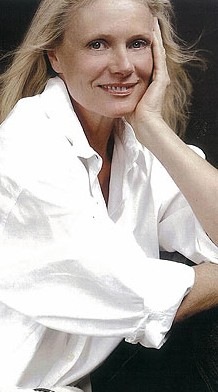Nothing fresh from Nielsen, but I’ll warm it up so we can have a bland snack:
The Me Generation Meets Generation Me
From their money to their media, Boomers and Millennials exhibit vastly different behaviors and habits…Understanding how to reach these consumers and capture their hearts with appropriate creative is crucial.
The Me Gen/Gen Me stuff is silly:
22 October 2009
Me vs. We Redux Redux
From my book ©2005:
Today, Baby Boomers are two or three times removed from being a “me” generation. What constitutes self-actualization when you are twenty-five is different than when you are fifty-five. In your twenties a person thinks they are the picture. As you get older, you see yourself more and more as a picture that is part of a bigger picture.
Talk to some folks in their twenties, thirties. They are now in that ‘me’ stage. It’s healthy, smart for them to be so. I was just like them thirty years ago, get a big bang out of them, admire their boundless creativity, energy – and self-obsession. These ‘me generation’ twentysomethings today will become a ‘we generation’ in thirty years.
Nielsen:
The aging brain is more easily distracted—as the brain ages it slowly loses the ability to suppress distraction.
Sounds familiar:
30 November 2008
Brains More Distracted, Not Slower with Age
Nielsen:
Contrast is the preference vs. color for online ads.
 Online and any ads – television, print, outdoor. As Nielsen implies, these ‘insights’ have less to do with generational differences and more to do with youth/aging bodies and brains.
Online and any ads – television, print, outdoor. As Nielsen implies, these ‘insights’ have less to do with generational differences and more to do with youth/aging bodies and brains.
Remember: We were young once – and wallowed in graphic and auditory noise.
Nielsen:
… Boomers prefer clever, light-hearted humor (rather than mean-spirited) and relatable characters who are Boomers themselves or not much younger. The tone should be positive—avoiding words like “don’t.” For Boomer males, clever wit and calm dialogue-driven storylines work. For Boomer females, family-friendly humor and sentimental themes resonate best.
I’d agree with that. In fact, my book is all about that. I likewise agreed with it a few years ago:
16 September 2009
Boomer Backlash II
Click that link above, for there’s a downside to all this.
 More posts about advertising and the Boomer brain:
More posts about advertising and the Boomer brain:

 … Boomer age men and women will be in greater demand in the next few years as models and actors in TV commercials, as companies finally wake up to the fact that boomers have some money to spend, a lot more, in fact, than the 20-something folks advertisers are so hot after.
… Boomer age men and women will be in greater demand in the next few years as models and actors in TV commercials, as companies finally wake up to the fact that boomers have some money to spend, a lot more, in fact, than the 20-something folks advertisers are so hot after. 08 February 2007
08 February 2007
 Boomer Backlash II
Boomer Backlash II






 And beepers going off to tell you you’re a lazybones? It sounds like fun once or twice, but pretty soon some sweats or tennis attire will be all you’ll put on. Being wired like an android and having to perform at specific levels every minute while you’re ‘playing’ could cause a slew of new anxiety afflictions.
And beepers going off to tell you you’re a lazybones? It sounds like fun once or twice, but pretty soon some sweats or tennis attire will be all you’ll put on. Being wired like an android and having to perform at specific levels every minute while you’re ‘playing’ could cause a slew of new anxiety afflictions. 
 While not privy to the changes, I do know that
While not privy to the changes, I do know that 










![[image11.png]](https://blogger.googleusercontent.com/img/b/R29vZ2xl/AVvXsEg0yF3u-sk7iMN1DOtbia-9o-yn6gVQUXyPGUhREGVv4HWv1iOFSN8Tc7ejO9D6oXgdfsItgL-QfAIluXznOCzt604gjpcacY-LhX6uBZ1YK1-9yMg1_6J1dz4u9Obv798HQx_SXw/s1600/image11.png) … Almost immediately, the gentleman said, “There is no way I could sell this to an advertising agency. They’re all twentysomethings – and have already told me, ‘Why target people over fifty? They watch your shows anyway.’”
… Almost immediately, the gentleman said, “There is no way I could sell this to an advertising agency. They’re all twentysomethings – and have already told me, ‘Why target people over fifty? They watch your shows anyway.’”



 29 November 2010
29 November 2010 Sounds right to me. From
Sounds right to me. From 
 … The advertising campaign has one ad with ashen-faced Baby Boomers in body bags ("These days, doctors don't pronounce you dead. Marketers do."). Another shows Baby Boomers acting like testosteroned teenagers ("Outta the way, punks: older racers are the hot-rod kings!"). Yet another has one of a middle-aged lady dead in a powder room (probably from overdoing it on the dance floor) with police chalk outlining her body. I don't know what the copy is because I haven't seen it. It's probably something like, "Give me wrinkle cream, or give me death!"
… The advertising campaign has one ad with ashen-faced Baby Boomers in body bags ("These days, doctors don't pronounce you dead. Marketers do."). Another shows Baby Boomers acting like testosteroned teenagers ("Outta the way, punks: older racers are the hot-rod kings!"). Yet another has one of a middle-aged lady dead in a powder room (probably from overdoing it on the dance floor) with police chalk outlining her body. I don't know what the copy is because I haven't seen it. It's probably something like, "Give me wrinkle cream, or give me death!"
 … Partly to save their hides, ad agencies turned their creative departments over to twenty-somethings. The sheer size of Baby Boomers made them the market—composed of scores of unwieldy cohorts. By attrition, this would have occurred naturally. It just happened ten or fifteen years sooner than with previous generations coming of age.
… Partly to save their hides, ad agencies turned their creative departments over to twenty-somethings. The sheer size of Baby Boomers made them the market—composed of scores of unwieldy cohorts. By attrition, this would have occurred naturally. It just happened ten or fifteen years sooner than with previous generations coming of age. Sounds about right to me. From 2009:
Sounds about right to me. From 2009: Actually, there are two distinct demos – something marketers need to know:
Actually, there are two distinct demos – something marketers need to know:  I would have used people in real situations – hire a few top-notch photographers and send them every which way (with someone trailing with release forms, etc.). No hokey ad copy.
I would have used people in real situations – hire a few top-notch photographers and send them every which way (with someone trailing with release forms, etc.). No hokey ad copy. 





